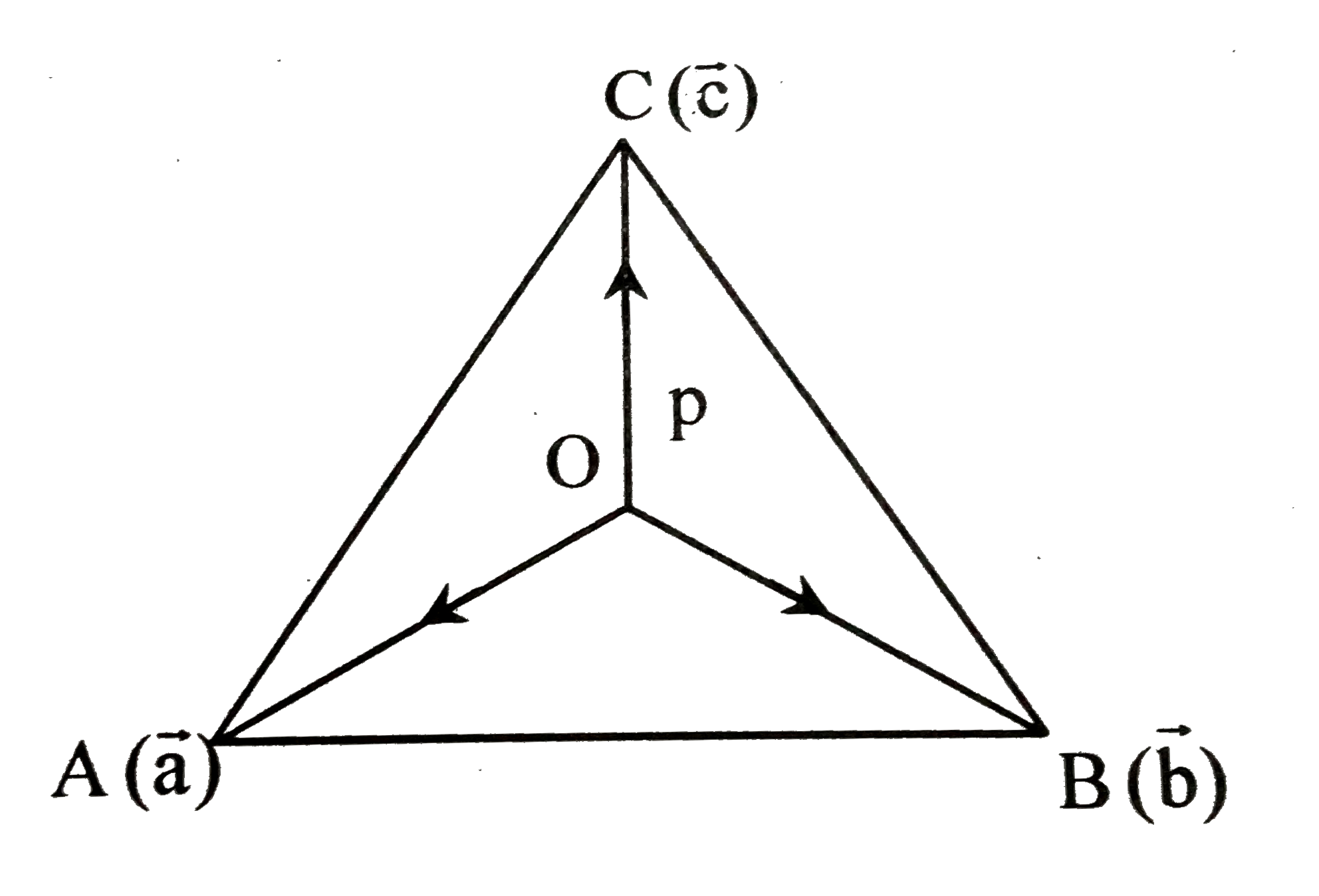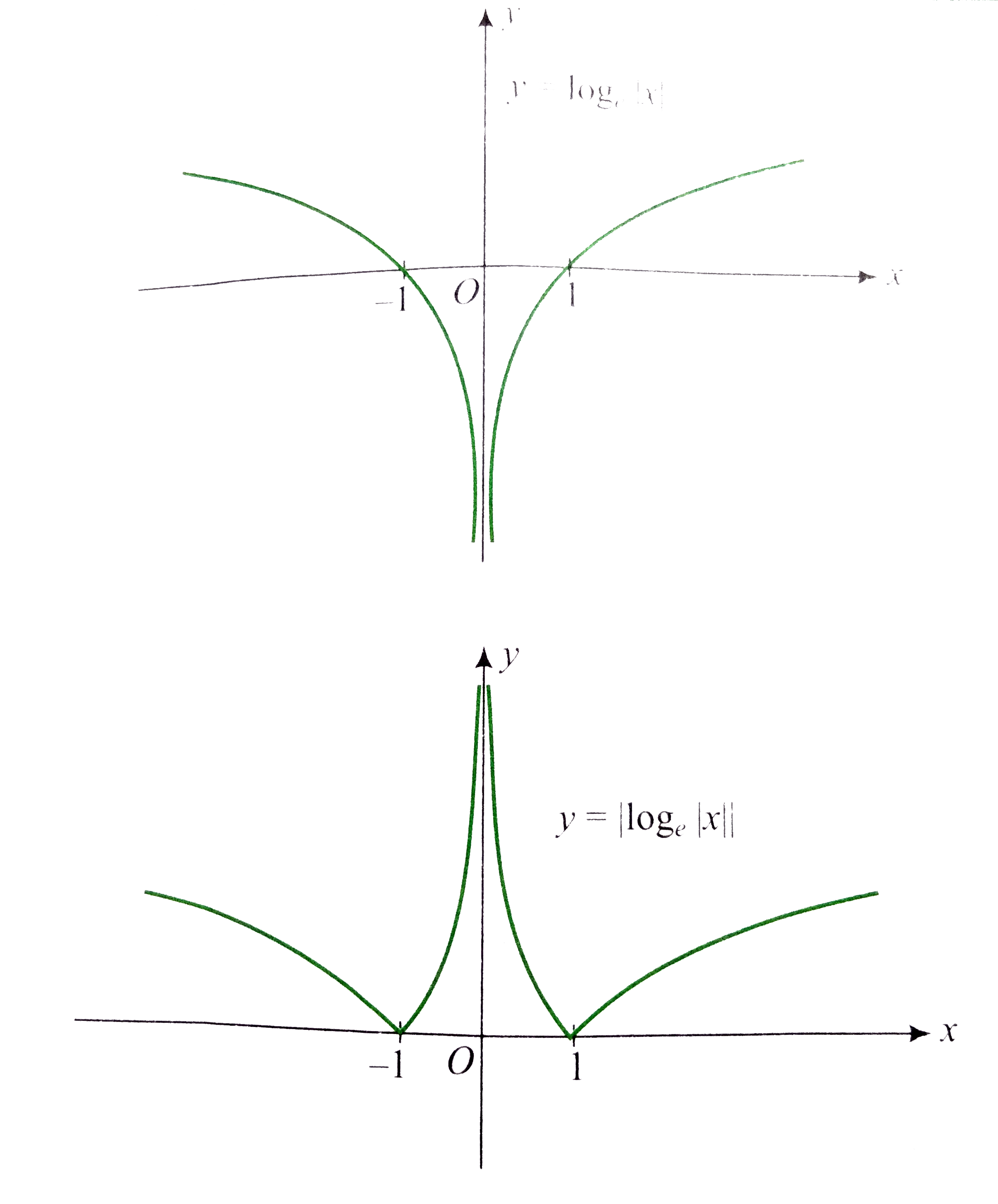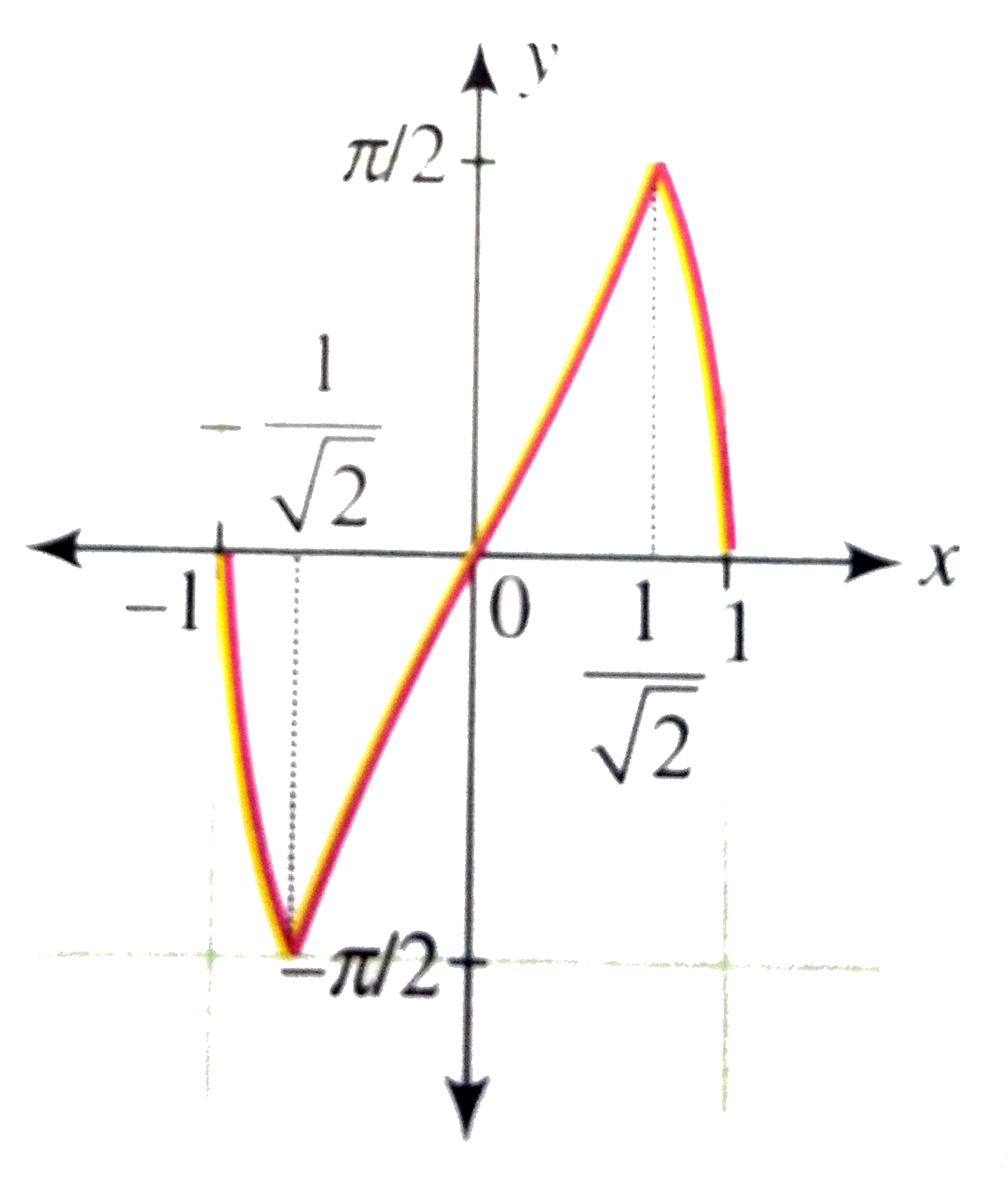InterviewSolution
This section includes InterviewSolutions, each offering curated multiple-choice questions to sharpen your knowledge and support exam preparation. Choose a topic below to get started.
| 8801. |
If |x| lt 1 then coefficient of x^(2) in (log(1+x))/((1-x)^(2)) is |
| Answer» Answer :A | |
| 8802. |
If (1, 0, 3), (2, 1, 5), (-2, 3, 6) are the mid-points of the sides of a tringle, then the centroid of the triangle is |
|
Answer» `(1/3, 4/3, -14/3)` |
|
| 8803. |
This section contains 1 paragraph. Based on paragraph, there are 3 questions. Each question has 4 choices (1), (2), (3), (4) out of which only one is correct Q. If F(x) is continuous at x=-1, then |
|
Answer» `a+B=-2` |
|
| 8804. |
This section contains 1 paragraph. Based on paragraph, there are 3 questions. Each question has 4 choices (1), (2), (3), (4) out of which only one is correct Q. if F(x) is continuous at x=+-1, then f(x)=g(x) has |
|
Answer» IMAGINARY roots for continuity at `x=1` `f(1)=g(1)=(f(1)+g(1))/(2)` `implies1+a+3=1+bimpliesb=a+3` Similarly we can check for other questions. |
|
| 8805. |
Ifa = cos "" (4pi)/(3) + isin "" (4pi)/(3) then ((1 + a)/(2))^(3n) = |
|
Answer» `((1)/(2))^(3n)` |
|
| 8806. |
Letf (x)= [x] , where[x]denotesthegreaterinteger lessthanorequalto x. ifa = sqrt(2011 ^2 +2012 ) then thevalueof f(a) isequalto |
|
Answer» 175 |
|
| 8807. |
Find the number of terms in the expansion of ((3a)/(4)+(b)/(2))^(9) |
|
Answer» |
|
| 8808. |
A line L is passing through the point A whose position vector is hati+2hatj-3hatk and parallel to the vector 2hati+hatj+2hatk. A plane pi is passingthrough the points hati+hatj+hatk, hati-hatj-hatk and parallel to the vector hati-2hatj. Then, the point where this plane pi meets the line L is |
|
Answer» `(1)/(7)(15hati+18hatj-9hatk)` |
|
| 8809. |
If x = sqrt(a^(sin^(-1)t)), y= sqrt(a^(cos^(-1)t)), show that (dy)/(dx)= -(y)/(x) |
|
Answer» |
|
| 8811. |
A tower BCD surmounted by a spire DE stands on a horizontal plane. At the extremity A of a horizontal line BA it is found that BC and DE subtend equal angles. If BC = 3 m, CD = 28 m and DE = 5 m, then BA is equal to |
|
Answer» `SQRT(18 XX 93)` |
|
| 8812. |
If A=(1)/(9)[[-8,1,a],[4,4,7],[b,-8,4]] is orthogonal find a, b hence find A^(-1). |
|
Answer» |
|
| 8813. |
Three copy machines- A,B and C- copy at the same rate and will all be used to make copies of a report. At 8:00 a.m., all 3 machines begin copying Machine A breaks down at 10:00 a.m. And is back in service at 1:00 p.m. Machine B breaks down at 12:00 p.m. (noon) and begins copying again at 3:00 p.m. All 3 machines finish copying at 5:00 p.m. when the copying of the report is complete. One of the following graphs showns n, the numbers of copies made, as a function of t, the time at any given point during the copying. Which graph is it? |
|
Answer»
|
|
| 8814. |
Let P(a sec theta,b tan theta) and Q(a sec phi, b tan phi) where is the point of intersection of normals at P and Q then k is equal to |
|
Answer» `(a^(2)+B^(2))/(a)` |
|
| 8815. |
A spherical ball of salt is dissolving in water in such a manner that the rate of decrease of the volume at any instant is propotional to the surface. Prove that the radius is decreasing at a constant rate. Hint for solution : Take volume V and curve surface are S of spherical ball. Calculate by taking (dV)/(dt)alpha S. |
|
Answer» |
|
| 8816. |
For the matrix A=[{:(1,1,1),(1,2,-3),(2,-1,3):}] Show that A^3-6A^2+5A+11I=O. Hence find A^(-1) |
|
Answer» |
|
| 8817. |
Find the locus of PIf the distance of P from (3,0) is twice the distance of P from (-3,0) |
|
Answer» |
|
| 8818. |
A special die is so constructed that the probabilities of throwing 1, 2, 3, 4, 5 and 6 are (1-k)/(6), (1+2k)/(6), (1-k)/(6), (1+k)/(6), (1-2k)/(6) and (1+k)/(6), respectively. If two such thrown and the probability of getting a sum equal to lies between (1)/(9) and (2)/(9), then the integral value of k is |
|
Answer» |
|
| 8819. |
Al Capone and his (n-1) friends are sitting in a circular fashion when Tintin meets him(To- tal of n people). Each of them owns a coin. First person passes 1 coin to the person sitting on his left side. The second person in turn passes 2 coins to the person sitting on the left. Third person passes 1 coin to the left, 4th passes 2 coin to his left and so on. So each person receiving 1 coin from the right has to pass 2 coins to the left. Similarly, a person receiving 2 coins from the right has to pass 1 coin to the left. If at any point of time, a person runs out of coin he is thrown out of the game. The game will terminate if at the end only 1 person is left with all the coins in his posses- sion. There might be values of n where the game may not terminate e.g. 3 persons left with 4 4 4 coins respectively. For how many different values of n from 4 to 100 does the game terminate? |
|
Answer» 16 for n=2k+1, after the first round configuration would look like3(3) 5(2) … `2k+1(2)` If k is odd, the game will not terminate. If both the cases if k is even, at the end of tworounds exactly half will remain. Because a person who looses a coin will keep loosing insubsequent round. After this elimination you again have to DEAL with cases where remaining people are odd oreven. Thus you can observe that if after the first roundpeople remain then the game willalways terminate. This can happen if initially there areorperson are there. Hence, the Answer is option: C)10 |
|
| 8820. |
If y=(sinx)^(cosx)+x^(sinx) find dy/dx. |
|
Answer» |
|
| 8821. |
If int (1)/(sin x + sqrt(3) cos x)dx = A log | tan f (x) | + C then A , f(x) = |
|
Answer» `(1)/(2), (x)/(2) + (PI)/(6)` |
|
| 8822. |
In the figure, the area of reactangle ABCD is 100. what is the area of the square EFGH? |
|
Answer» 256 |
|
| 8823. |
int(2x^3+3x^2-3)/(2x^2-x-1)dx= |
|
Answer» `(x^2)/(2)+2x+(5)/(6)log|2x+1|+(1)/(3)log|x-1|+c` |
|
| 8824. |
If high voltage current is applied on the field given by the grapjh y+|y|-x-|x|=0. on which of the following curve a person can move so that the ramains safe ? |
|
Answer» `y=X ^(2)` |
|
| 8825. |
find the roots x^(11)-x^7+x^4-1=0 |
| Answer» | |
| 8826. |
Find (dy)/(dx) of the functionsy^(x)= x^(y) |
|
Answer» |
|
| 8827. |
Integration using rigonometric identities : int sin(101x)*sin^(99)x dx=...+c |
|
Answer» `(sin(100x)*(SINX)^(100))/(100)` |
|
| 8828. |
What is the angle substended by an edge of regular tetrahedron at its centre? |
|
Answer» `cos^(-1)((-1)/(2))`  `veca,vecb,vecc` are unit vector `veca^^vecb=vecb^^vecc=vecc^^veca=(pi)/(3)` centre p `((veco +veca+vecb+vecc)/(4))` Now anglebetween `VEC(AP)&vec(BP)` `costheta=(vec(AP)*vec(BP))/(|vec(AP)||vec(BP))=(((veca+vecb+vecc)/(4)-veca)*((veca+vecb+vecc)/(4)-vecb))/(|(veca+vecb+vecc)/(4)-veca||(veca+vecb+vecc)/(4)-vecb|)` `=((vecb+vecc-3veca)*(veca+vecc-3VECB))/(|vecb+vecc-3veca|*|veca+vecc-3vecb|)` `=(veca*vecb+vecb*vecc-3vec(b^(2))+veca*vecc+vec(c^(2))-3vecb*c-3vec(a^(2))-3veca*vecc+9veca*vecb)/((vec(b^(2))+vec(c^(2))+9vec(a^(2))+2vecb*vecc-6veca*vecc-6veca*vecb))` `((1)/(2)+(1)/(2)-3+(1)/(2)+1-(3)/(2)-3-(3)/(2)+(9)/(2))/(1+1+9+1-3-3)` `=(-5+3)/(6)=-(1)/(3)` `theta=cos^(-1)(-(1)/(3))` |
|
| 8829. |
Let P and T be the subsets of X-y planedefined by fP={(x,y):x le 0,y and x^(2)+y^(2)=1} T={(x,y):xgt0,ygt0 and x^(8)+y^(8)lt1}thenP cup T is |
|
Answer» the voidset `PHI` |
|
| 8830. |
In a Binomial distribution mean is 4 and variance is 3 find P(X ge 1). |
|
Answer» |
|
| 8831. |
Find the number of 4 letter words that can be formed using the letters of the word "EQUATION". begin and end with vowe |
|
Answer» |
|
| 8832. |
Let f(x) ={{:( x+2, 0 le x lt 2),( 6-x, x ge 2):}, g(x)={{:( 1+ tan x, 0le x lt (pi) /(4)),( 3-cotx,(pi)/(4) le x lt pi ):} the numberof pointof non - differentiability ofh(x) =|f(g(x))|is |
|
Answer» 1 |
|
| 8833. |
Determine the number of 8-tuples (in_(1), in_(2),…, in_(8)) such that in_(1), in_(2),.., in_(8) in (1, -1) and in_(1) 2 in_(2) + 3 in_(3) + …+ 8 in_(8) is a multiple of 3. |
|
Answer» |
|
| 8834. |
a**b = (ab)/(1) defined on Q. Inverse of 0.001 is…........ |
|
Answer» 1000000 |
|
| 8835. |
Draw the graph of y=log_(e)(-x),-log_(e)x,y=|log_(e)x|,y=log_(e)|x| and y=|log_(e)|x|| transforming the graph of y=log_(e)x. |
Answer» SOLUTION : 
|
|
| 8836. |
{:(" "Lt),(n rarr oo):}(1)/(n^(6)){(n+1)^(5)+(n+2)^(5)+...+(2n)^(5)}= |
|
Answer» 0 |
|
| 8837. |
Let A = {x in N: x is a multiple of 3 and x le 100} B ={x in N : x is a multiple of 5 and x le 100}, The number of elements of (A xx B) cap (B xx A) |
|
Answer» 6 |
|
| 8838. |
bar(a) and bar(b) are unit vectors. |bar(a)+bar(b)|=sqrt(3) then the value of (3bar(a)-4bar(b)).(2bar(a)+5bar(b)) = …………… |
| Answer» ANSWER :D | |
| 8839. |
intx cosec x Cotx dx = |
|
Answer» xcosecx - log `| TAN ""(x)/(2)| + c` |
|
| 8840. |
If |(1,a^(2),a^(4)),(1,b^(2),b^(4)),(1,c^(2),c^(4))|=k|(1,1,1),(a,b,c),(a^(2),b^(2),c^(2))| then k is |
|
Answer» `(a + B) (b + c) (c + a)` |
|
| 8841. |
Integration of a binomialdifferential int(dx)/(x^(4)sqrt(1+x^(2))). |
|
Answer» |
|
| 8843. |
Statement-I : log(1+x+x^(2)+…)=x+(x^(2))/(2)+(x^(3))/(3)+(x^(4))/(4)+… Statement-II : 4^(th) term of log(3//2) is (-1)/(64) Statement-III: "Tan"^(2)x-(1)/(2)"Tan"^(4)x+(1)/(3)"Tan"^(6)x ………. =2log(sec x) Which of the above statements are true |
|
Answer» I, II are TRUE |
|
| 8844. |
If P(B)= (3)/(5), P(A//B)= (1)/(2) and P(A cup B)= (4)/(5) then P(A cup B)' + P(A' cup B)=………. |
| Answer» Answer :D | |
| 8845. |
For nge 2, let a_(n)=sum_(r=0)^(n)1/(C_(r)^(2)), then value of b_(n)=sum_(r=1)^(n)1/(r^(2)C_(r)^(2)) equals |
|
Answer» `1/(N^(2))a_(n)` |
|
| 8846. |
Shortest distance between z-axis and the line (x-2)/(3)=(y-5)/(2)=(z+1)/(-5) is |
|
Answer» `1//SQRT(13)` |
|
| 8847. |
Drawthe graph of y=sin^(-1)(2xsqrt(1-x^(2))) |
|
Answer» Solution :We have `y=f(X)=sin^(-1)(2xsqrt(1-x^(2)))` Clearly, the domain of the function is [-1, 1]. LET `x=sintheta, theta in[-pi//2,pi//2]` `rArr""theta=sin^(-1)x`  Now `sin(2xsqrt(1-x^(2)))=sin^(-1)(2 sinthetacostheta)` `=sin^(-1)(sin2theta)` `=sin^(-1)(sinalpha)," where "alpha in [-pi,pi]` Now consider the GRAPH of `y=sin^(-1)(sin alpha)," where "alpha in [-pi, pi]` From the grph, `y=f(x)=sin^(-1)(2xsqrt(1-x^(2)))=sin^(-1)(sin alpha)` `={{:(-alpha-pi,-pilealphalt-pi//2),(alpha, -pi//2alphalepi//2),(-alpha+pi,pi//2ltalphalepi):}` `={{:(-2sin^(-1)x-pi,-pile2sin^(-1)xlt-pi//2),(2sin^(-1)x,-pi//2le2sin^(-1)xlepi//2),(-2sin^(-1)x+pi,pi//2lt2sin^(-1)xltpi):}` `={{:(-2sin^(-1)x-pi,-pile2sin^(-1)xlt-pi//4),(2sin^(-1)x,-pi//pile4sin^(-1)xlepi//4),(-2sin^(-1)x+pi,pi//4ltsin^(-1)xltpi//2):}` `={{:(-2sin^(-1)x-pi,-1lexlt-1/sqrt2),(2sin^(-1)x,-1/sqrt2lexle1/sqrt2),(-2sin^(-1)x+pi,-1/sqrt2lexle1):}` `={{:(-2/sqrt(1-x^(2)),-1ltxlt-1/sqrt(2)),(2/sqrt(1-x^(2)),-1ltxlt-1/sqrt(2)),(-2/sqrt(1-x^(2)),-1ltxlt1):}` Clearly, y = f(x) is non-differentiable at `x=+-1/sqrt2` y=f(x) inreases for `x in (-1/sqrt2,-1/sqrt2)` and decreases for `x in (-1,-1/sqrt2)cup(1/sqrt2,1)` For f(x) `= -2 sin^(-1)x-pi` `f(-1)=-2sin^(-1)(-1)-pi=0,f(-1/sqrt2)=-2(-pi/4)-pi=-pi/2` Thus, `sin^(-1)(2xsqrt(1-x^(2)))` decreases from 0 to `-pi/2` when x increases from -1 to `-1/sqrt2`. For `f(x)=2sin^(-2)x` `f(-1/sqrt2)=2(-pi/4)=-pi/2` `f(1/sqrt2)=2(pi/4)=pi/2` Thus, `sin^(-1)(2xsqrt(1-x^(2)))" increases from "=pi/2"to"pi/2" when x in creases from "-1/sqrt2"to"1/sqrt2` For `f(x)=-2sin^(-1)x+pi` `f(1/sqrt2)=-2(pi/4)+pi=pi/2,f(1)=-2sin^(-1)(1)+pi=0` Thus, `sin^(-1)(2xsqrt(1-x^(2)))" decreases from "pi/2"to"0` When x increases from `1/sqrt2"to1`. From this INFORMATION, we can DRAW the graph of `sin^(-1)(2xsqrt(1-x^(2)))` as shown in the adjecnt figure. 
|
|
| 8848. |
If a line makes angles 90^@, 135^@, 45^@ with the x, y and z- axes respectively, find its direction cosines. |
|
Answer» |
|
| 8849. |
A function f:RtoR is such that f(x+y)=f(x).f(y) for all x.y inR and f(x)ne0 for all x inR. If f'(0)=2 then f'(x) is equal to |
| Answer» ANSWER :C | |
| 8850. |
If alpha, beta and gamma are the roots of the equation x^(3)+px^(2)+qx+r=0 , then the coefficient of x in the cubic equation whose roots are alpha(beta+gamma), beta(gamma+alpha) and gamma(alpha+beta) is |
|
Answer» 2q |
|